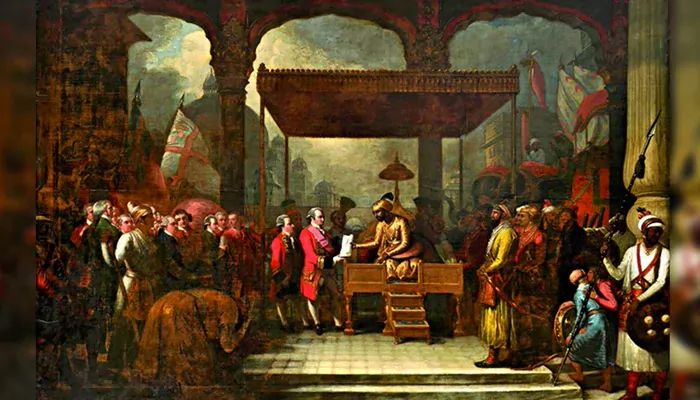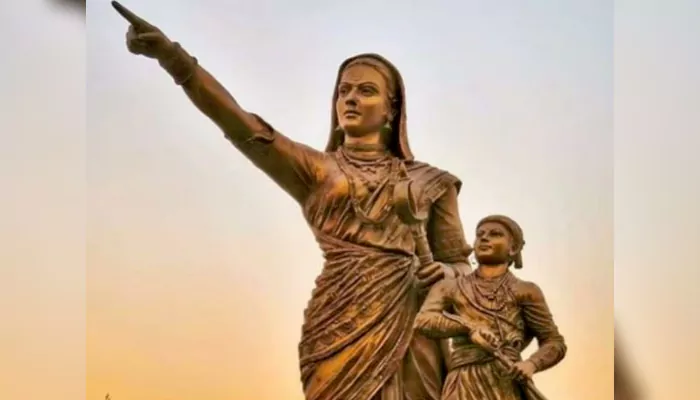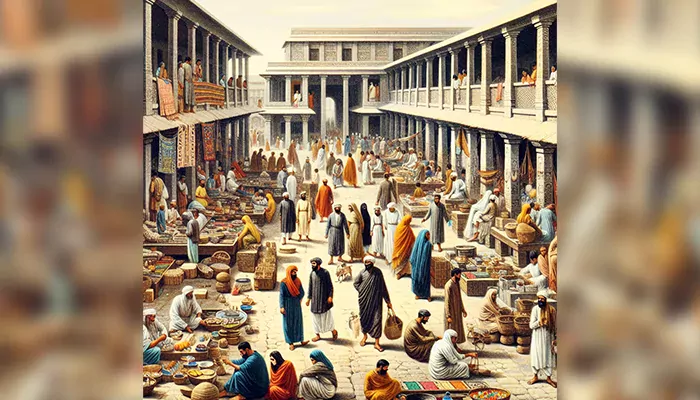How and Why the British Turned Zamindars Into Kings: A Story of Power and Control
- Sayan Paul
- 4 months ago
- 7 minutes read

Though centuries old, the zamindari system flourished like never before during the British Raj.
Almost every region in India has an old zamindar house standing tall, worn by time but still holding on to its past glory. We walk past these grand structures without thinking twice, but if we care to dig a little, their history is actually quite fascinating. Once upon a time, zamindars were the ones who held control over land and people. Or at least, that’s how it looked on the surface. In truth, however, their power was carefully and cleverly controlled by the British Raj. The zamindari system had existed for centuries, but it was under British rule that it truly thrived. And that wasn’t by chance. The British knew exactly what they were doing. Propping up zamindars was about tightening their own grip over India.
But how did this happen? Why did the British need the zamindars? And what did they gain by giving them so much power? In this article, we understand the whole thing and how that move changed the course of Indian history.
A Brief History of the Zamindari System
The idea of zamindars is older than the British presence in India. For centuries, they served as tax collectors, military supporters, or influential local leaders who worked under larger kingdoms. During the Mughal era, their job was to collect a share of the harvest for the empire. They didn’t own the land but had the right to manage it and take a portion of the produce.
Historian Bipan Chandra explains it plainly in India’s Struggle for Independence: zamindars weren’t landowners in the way we think of them today. Their role was rooted in influence and local ties, not legal titles. In places like Bengal, they held significant clout, while in other regions, they were more like village heads, with modest authority.
Their relationships with peasants were shaped by custom and familiarity. Zamindars helped maintain order, sorted out disputes, and were expected to look after their communities, at least to a degree. But their power, though sometimes oppressive, wasn’t really absolute. That balance would be upended after the British arrived, because the British didn’t want shared power. Instead, they wanted obedience.

Why the British Chose the Zamindars
After the East India Company took control of Bengal in the late 18th century, it found itself with a problem. It needed revenue, but collecting taxes directly from millions of farmers across an unfamiliar, often hostile landscape was next to impossible. Company officials lacked the local knowledge, the language, and most importantly, the trust of the people. Worse, their early efforts to manage revenue collection themselves led to corruption and widespread suffering.
As historian Eric Stokes notes in Peasants and the Raj, the Company’s initial attempts were “marked by inefficiency and exploitation.” So, they looked for a workaround. They needed middlemen who knew the land and the people, and who could deliver steady payments. The zamindars fit the bill.
In 1793, Governor-General Lord Cornwallis introduced the Permanent Settlement in Bengal, Bihar, and parts of Orissa. This policy locked in the amount of tax a zamindar owed the British each year. In exchange, these men were declared hereditary landowners, something they had never officially been under the Mughals. The idea was that if zamindars knew they could keep what they collected beyond the fixed amount, they would have a reason to improve agricultural output.

But there was more to it. As historian Ranajit Guha argued in Dominance Without Hegemony, this was also about politics. The British were building a local elite who would have every reason to support the colonial regime, because their fortunes now depended on it.
Repackaging the Zamindars: From Collectors to Kings
The British reinvented the zamindar's role. With land rights in hand, these men gained new powers. They could raise rents, evict tenants, and accumulate wealth on a scale never seen before. To cement their standing, the British gave them ceremonial titles ("Raja," "Nawab", "Raibahadur", etc.) and showered them with gifts, honorary posts, and invitations to official events.
In Bengal, wealthy zamindars like the Tagore family or the rulers of Burdwan began living lives that resembled European aristocrats. Their homes became grand estates. And their portraits hung alongside British officials. They were treated as Indian nobility, but their authority came from a legal document, not lineage.
This shift disrupted rural life in a serious way. The earlier relationship between zamindars and peasants (however flawed) had been based on certain customs and limits. Under the British, that understanding broke down. Historian Sumit Sarkar, in Modern India, points out that this new zamindari order left peasants deeply vulnerable, often stripped of rights and protections they once had.

The zamindar now answered not to the community, but to the British. And as revenue pressures grew, it was the tenant who suffered.
What the British Got in Return
The British found exactly what they had hoped for: a steady flow of tax revenue without having to manage the complex village economies themselves. The Permanent Settlement made it the zamindar’s responsibility to extract and pay up. If he failed, his land could be taken away and sold to someone more dependable. A Company report from 1793 even acknowledged this benefit, stating the policy “relieves [the government] from the intricacies of local management.”
But the gains weren’t only financial. The zamindari system also served a deeper political function. It created a dependable class of allies who had power and money but whose position depended entirely on the British staying in charge. These zamindars had no reason to rebel; their interests were now tied to the colonial regime.

And there was another effect. This system deepened the divide between landlords and tenants. With zamindars acting as local enforcers of colonial authority, the countryside grew more fractured. Peasants were left to fight battles they had little hope of winning.
How It Changed Indian Society
For ordinary farmers and rural families, the transformation of the zamindari system brought hardship. Rents climbed as zamindars tried to squeeze more from the land to meet fixed revenue demands and to fund their growing luxuries. Evictions became widespread, and customary protections vanished. Bengal, where this system was first introduced, saw some of the worst consequences.
The Bengal Famine of 1770, though predating the official Permanent Settlement, revealed what could happen when landlords, traders, and colonial officials prioritized profit over survival. Millions died, and yet tax collections didn’t stop.

Resistance obviously wasn’t far behind. In the Indigo Revolt of 1859-60, farmers refused to grow indigo for European planters. The Santhal Rebellion of 1855 saw tribal communities rise not just against British officers but also against zamindars who worked alongside them.
After Independence, India’s leaders recognized that the zamindari system had done long-term damage. In the 1950s, land reform laws were passed to abolish zamindari rights and redistribute land. It was a major political step, but not a perfect solution. In many places, landlords held on to influence through other means. The social divide took much longer to heal.
The zamindari system worked well for the British. And for the zamindars, it brought prestige and fortune. But for the millions who worked for the land, it was a disaster.












